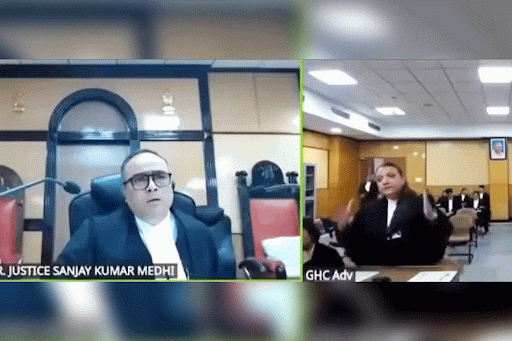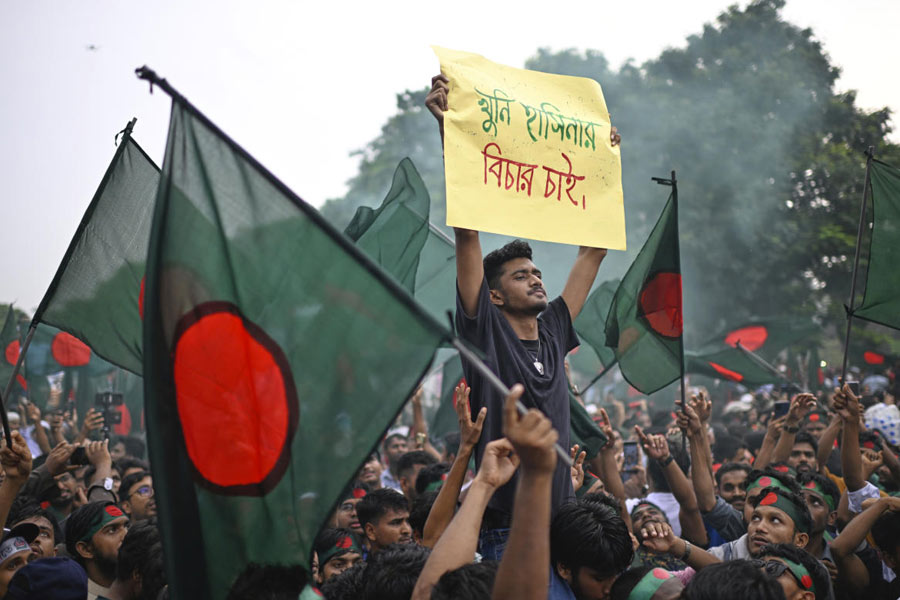New Delhi, Aug. 30 :
New Delhi, Aug. 30:
Move over Bimaru, Bigrao is here... with Bengal in tow.
Ever since the 11th Finance Commission's report was published, economists here have been falling over themselves to change the acronym Bimaru - short for Bihar, Madhya Pradesh, Rajasthan and Uttar Pradesh - that was first used in a population study but later came to be used to describe India's 'sick' cowbelt.
The reason for the search is simple.
'Madhya Pradesh and Rajasthan are out, but Bengal is in (in the poor and sick category),' explains D.K. Srivastava, professor at the National Institute of Public Finance and Policy and principal consultant to the commission.
Ashis Bose, the economist-demographer who first coined the phrase Bimaru, has come up with a variation: Bigrao, for Bihar, Bengal and Orissa.
'It means spoilt, delinquent,' says Bose, now honorary professor at the Institute of Economic Growth. 'Bengal's is a riches to rags story.'
The commission report is one of the most embarrassing so far for Bengal finance minister Asim Dasgupta. It is also a document that can be used by the Left's opponents to berate the policies which have pushed the state government into penury.
Bengal's fiscal deficit is 9.3 per cent of its gross state domestic product (GSDP). Among general category states, only Orissa has a larger fiscal deficit.
In the index of fiscal discipline, West Bengal (88) has the lowest rank among general category states.
In the 10th Finance Commission study, Bengal was in the middle income group. In the 11th report, Bengal is 5th from the bottom in terms of comparable per capita GSDP. Only Bihar, UP, Orissa and Madhya Pradesh have a lower per capita GSDP. Rajasthan has gone one notch above Bengal.
Against this background, the 11th Finance Commission has fixed Bengal's share of Central taxes at 8.116 per cent (which roughly corresponds to Bengal's share in India's total population), slightly larger than the recommended figure by the 10th Finance Commission.
But where West Bengal gets really more is in the 'revenue deficit' grants. 'This is not a prize. It is a survival kit so that Bengal can breathe and restructure,' says Srivastava.
Bengal did not get anything under this head in the 10th Finance Commission recommendations. A total of Rs 3,246 crore as revenue deficit grants will be given for the first three years.
But the finance commission is likely to employ a carrot-and-stick policy here. The amount will be disbursed on condition that the state government discipline its finances. The instruments/methods through which the Centre will ask the state to go about this task will be known only after the finance commission submits its report on this term of reference shortly.
Srivastava says during its deliberations, the Commission tried to apply certain norms to restrict the flow of funds to Bengal. 'Even so, Bengal gets the money because its revenue deficit is the largest among the general category states.'
Bengal's total entitlement under the 11th Commission for five years is Rs 35,219 crore.
Studies by the Commission have also indicated where Bengal has gone wrong and hint how it might seek to alter its ways. 'However,' says a source involved with the studies, 'there is no way the Centre can function like the World Bank and insist that Bengal carries out reforms if it wants the funds it is entitled to.'
Broadly, the Commission is advising the state to shift its focus from agriculture to industry and services sectors. 'In a successful year, agriculture can at best give a growth rate of 4 per cent; industry 12 per cent and services 20 per cent,' says the source. 'By ignoring sectors which have a larger growth potential, Bengal's GSDP has got depressed. This calls for structural changes in the economy.'
The scenario the source paints if Bengal does not get the money promised to it by the Commission is frightening. 'In two months, state employees will stop getting salaries. In three months, state transport services will come to a halt. In five months, it will be difficult to pay even policemen.
The 'comic strip' economist, Ashis Bose, says Orissa actually got into the 'super-poor' category before Bengal, particularly because its child mortality rate is the highest. 'At that time I classified these states as Ati-Bimaru (chronically sick). But now that Bengal has got in, I cannot but help using Bigrao.'
 Tuesday, 19 August 2025
Tuesday, 19 August 2025









